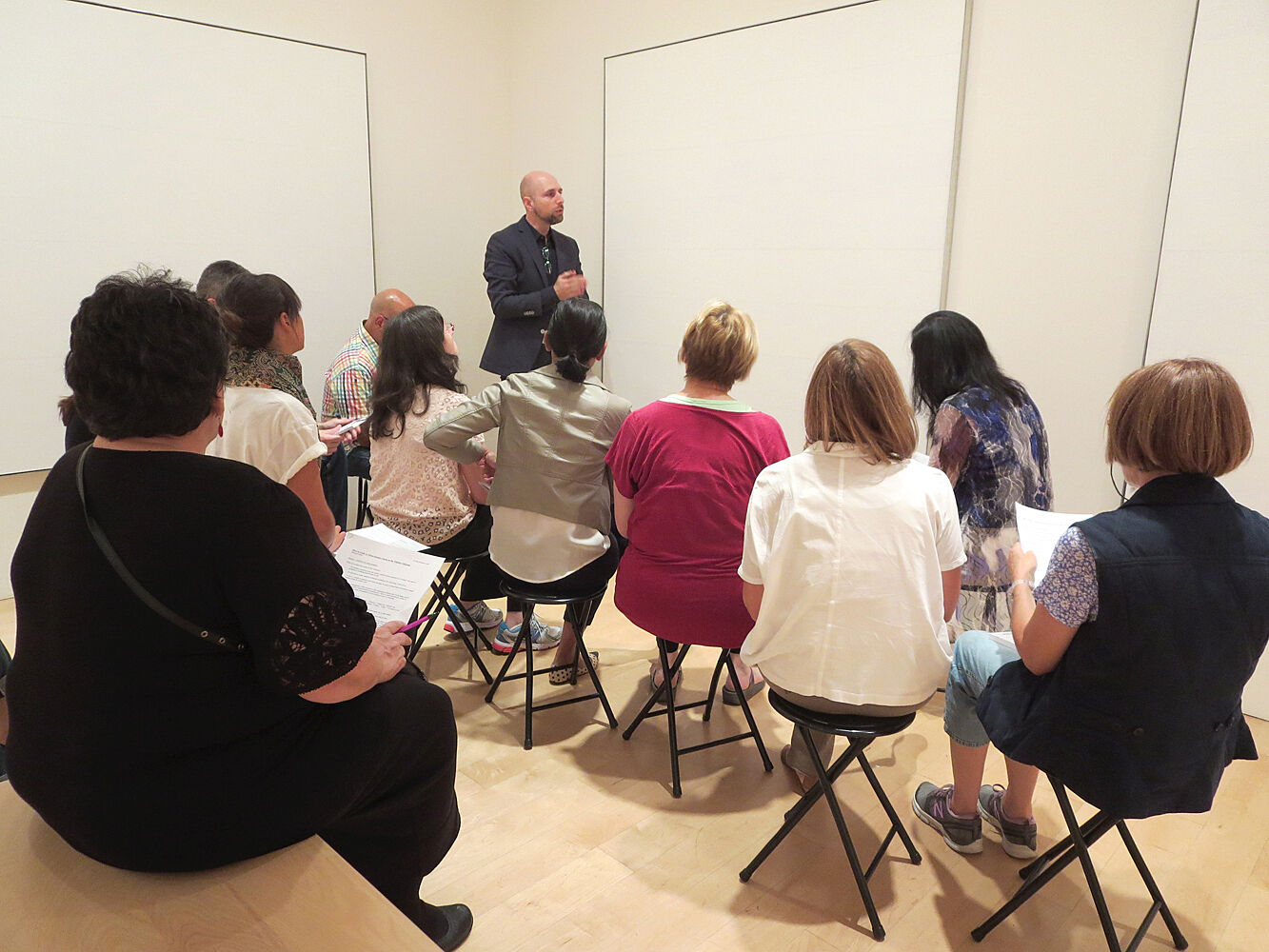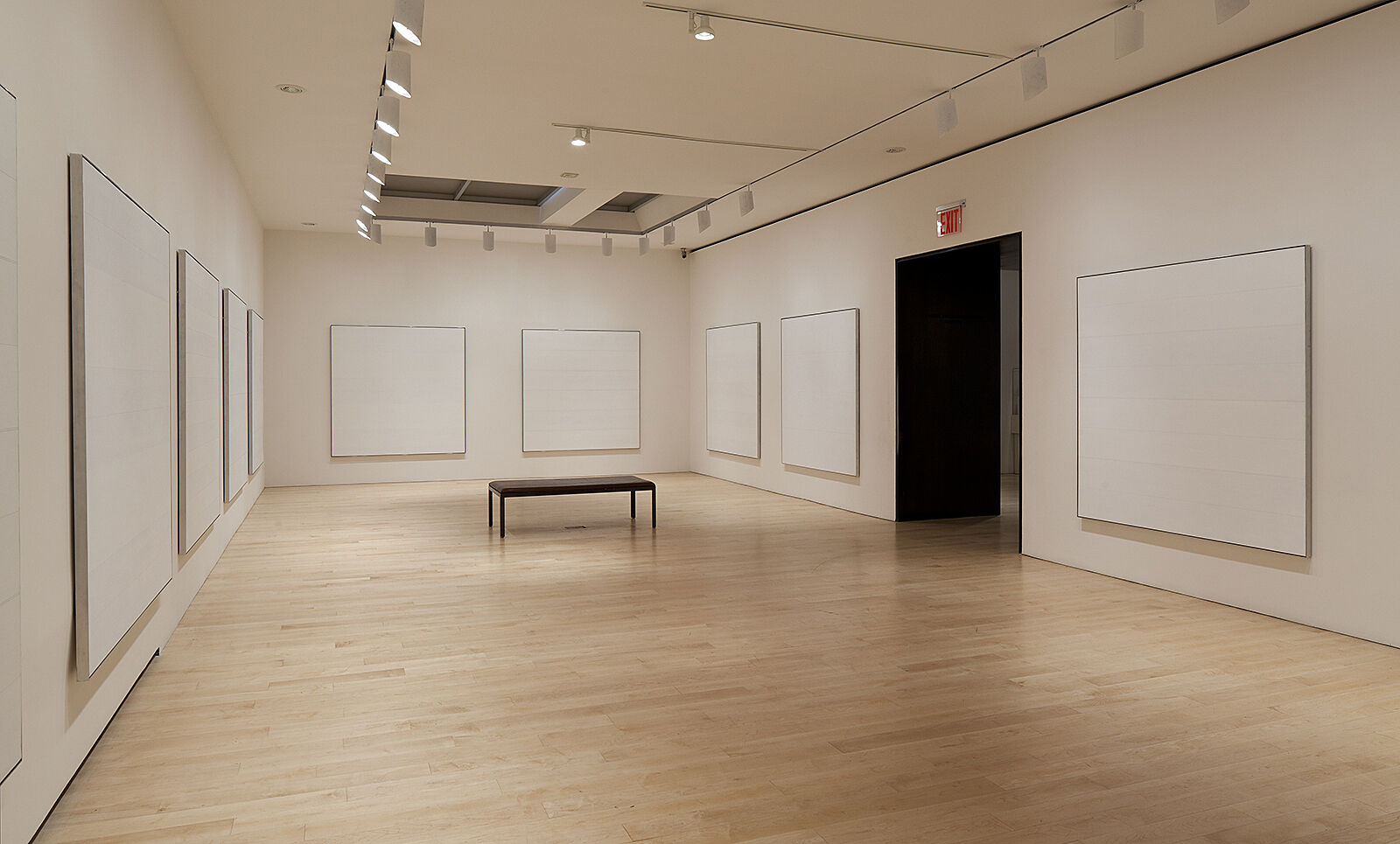How to Look
Sep 19, 2014
How is digital technology changing the way that we look at works of art and the experience we have in a museum? What kind of attention is required by a work of art? Such questions are becoming increasingly urgent as more and more museums allow visitors to use photography and social media in the galleries. How to Look, a new program organized by the Education department in collaboration with Michael Lobel, writer, critic, and Professor of Art History at Purchase College, State University of New York, challenges visitors to put away their smartphones, slow down, and engage deeply with works of art.
Lobel is familiar with the Whitney’s collection—he is a former Joan Tisch Teaching Fellow who gave tours for Museum visitors while completing his doctoral degree. In his introduction to How to Look, Lobel explained that the goal of the course is to give participants techniques for understanding and appreciating works of art, beginning with learning to look closely. The first session focused on a technique that involves using careful observation and neutral, declarative language to produce a verbal or written description of a work of art, and then evaluating the description for accuracy.
At the beginning of the program, the group gathered around Agnes Martin’s The Islands (1979) in the exhibition Shaping a Collection: Five Decades of Gifts. Lobel cautioned that distancing oneself from feeling, taste, or individual preference and describing the work objectively might be the most challenging—and perhaps frustrating—part of the exercise. He encouraged everyone to move closer to one of the paintings and asked them to write one or two statements about what they were seeing. Then he asked participants to share their descriptive statements. One person stated that the work has eight rectangles equidistant from left to right and seven lines lying horizontally from one edge of the piece to the other. On closer observation, the group noticed that there are actually ten lines in the work and they do not extend entirely to the edges of the canvas.
Lobel emphasized that it is impossible to do these descriptions with photographic or digital reproductions. You have to look directly at the work itself to discern what is there. In a reproduction of The Islands, it would be impossible to see the brushstrokes on the surface of the canvases or the subtle variations of color in each work. Indeed, Lobel noted that viewers might walk through the gallery and think that Martin’s paintings are monochromes.
One participant remarked that our brains interpret what we think we are seeing, not what our eyes actually see. Lobel reiterated that when we really look at what the artist put there, we begin to perceive more specificity and complexity in works of art—what is in front of us is what the artist wanted us to see. One of the participants summed it up succinctly: “When I start to see in this way, I become the paintbrush.” If we take time and use careful visual observation, we can become more aware of how artists made their work and we begin to look at art in more subtle and nuanced ways.
Learn more about the How to Look program
By Dina Helal, Manager of Education Resources


